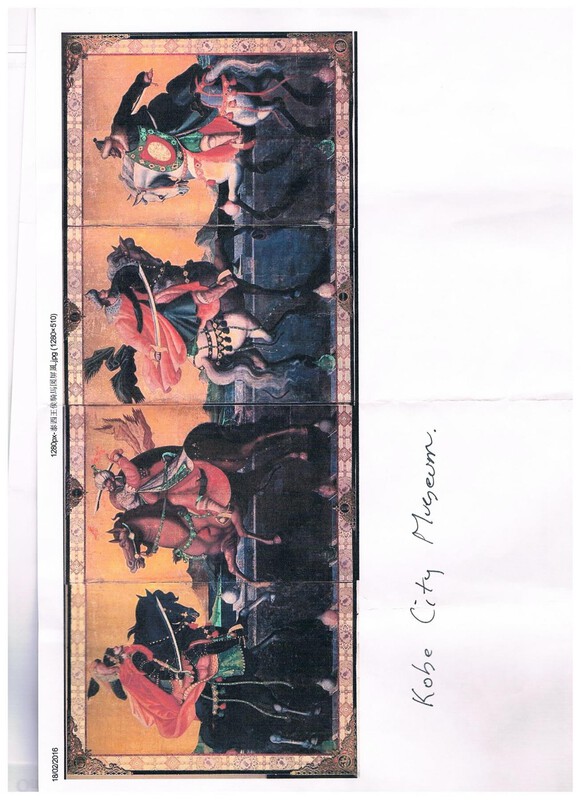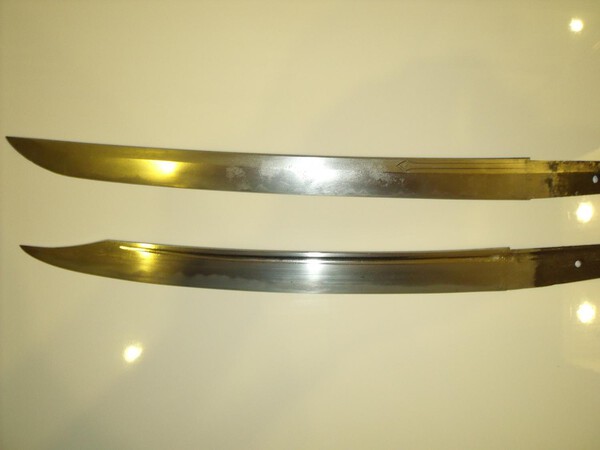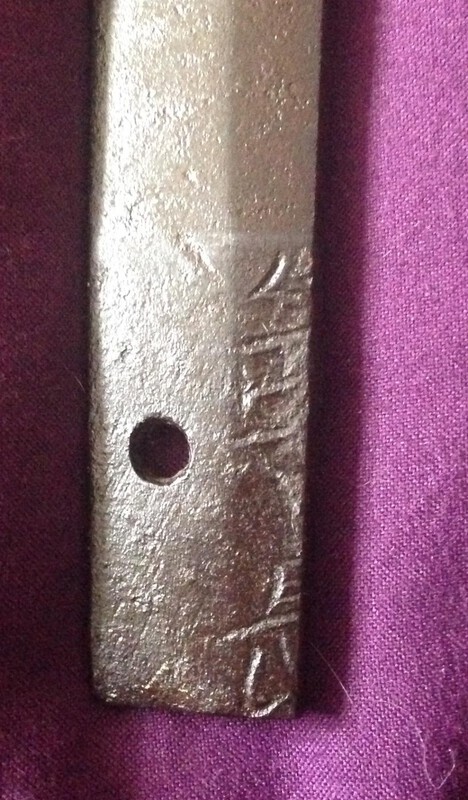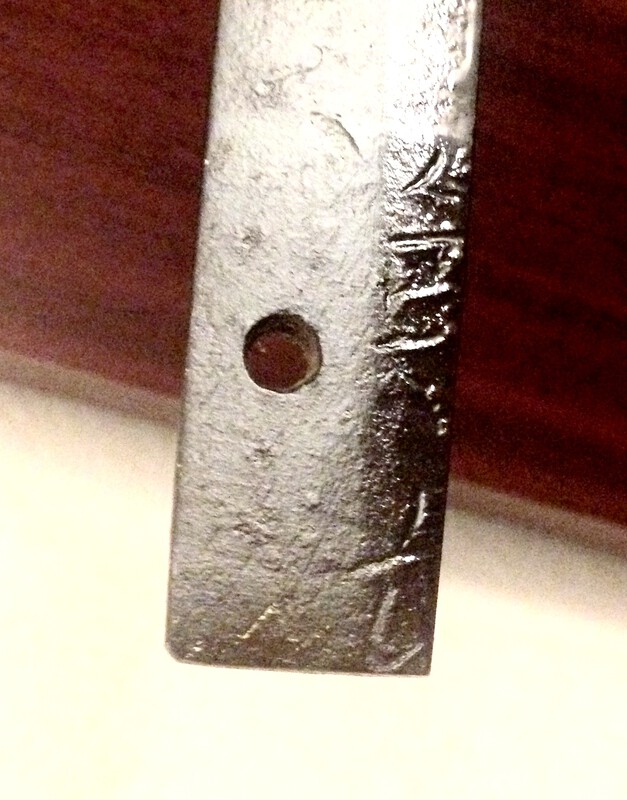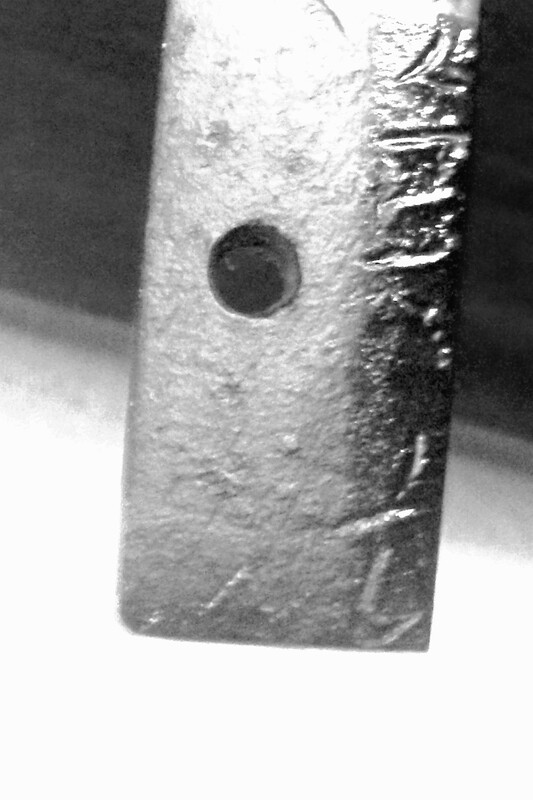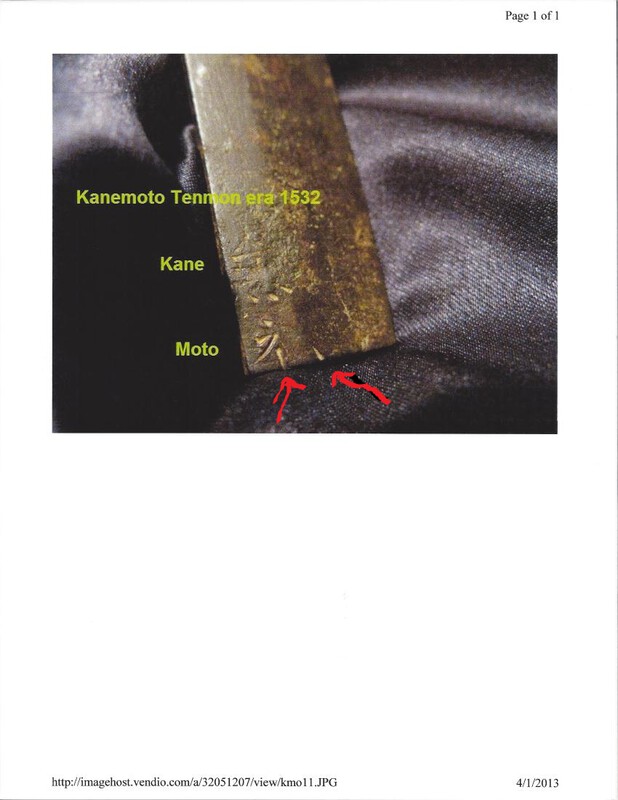-
Posts
560 -
Joined
-
Last visited
Content Type
Profiles
Forums
Events
Store
Downloads
Gallery
Everything posted by J Reid
-
Hey guys! I have an interesting blade up for discussion. A friend has asked me for assistance in doing some research on the sword in question. It's a late muromachi/early Edo period wakizashi with a very European sugata. This is the story: "it was sold to me as Koto, the expert from the token told me that he thought it was gimei (I think so ) also that he thought it was shinshinto, and made to look older !!!, and also that the kissaki had been reshaped. ( it certainly looks that way ) ..He said he thought it was Nata and used in the tea ceremony Etc. I was a little taken back by all this after all he is the expert... Same day I met a polisher, I asked him to polish to 2 blades in the picture. While polishing the lower blade he noticed that the hamon went all around the kissaki, and also back around the cut away section. So this meant that the blade was forged as we see it, and the kissaki had not been re shaped. As he had never seen this before, he took it to another expert, this man is the curator of the Leeds Armoury, Japanese section. He said that the sword was indeed Koto, made in the muromachi period mid 16C by the Japanese sect who embraced the European culture, dressed as the European's and forged their sword's as they imagined the western swords would look like. He sent me a print out of a tapestry, that hangs in Kobe city museum, in which mounted westerners displayed swords with similar cut away tips. He also said that it was rare, and that the did not have one in the armoury / museum. I have searched the internet for info. but can not find any references." IMO This may be a rare example of a nihonto commissioned by a European foreigner (Portuguese?) while visiting Japan. Not used by any samurai. What are your thoughts? I'm at a dead end for any further info here.
-
The blade seems to be in healthy shape. Definitely worth a polish. Nakago condition says late shinshinto- or more likely, early gendai. Probably made around the time of export to Germany.. 1920's-30's? The tsuba, kozuka, Kogatana, Fuchi-gashira, ribbed saya, and menuki could all be sold separately to recover your investment twice over. Or sell koshirae as a whole. Based on what I can see.. Every part in that package has value. Any way you cut it, you're winning.
-

Please Opinions On Possible Purchase Of Gunto With Old Blade
J Reid replied to Guderian's topic in Military Swords of Japan
I agree. Definitely not a ww2 blade.. Genuine nihonto for sure. Shinto.. Higher end koshirae. Maybe remounted in later days as hamish pointed out. Nakago is a bit corroded and seems to be quite short for a katana. What's the measurements? Is it a wakizashi? -
1. Kanbun shinto 2. Late kamakura/ early nambokucho 3. Mid nambokucho 4. Late heian/early kamakura
-
Upon comparing the 3 images I am confident about the mei being 兼長. However, I feel my kanenaga is earlier than the right mei and a different smith than the left mei. The left nakago seems to have kiri yasurime (if my eyes are not mistaken), and mekugi-ana placement is different. Thanks so much for your help!!!
-
Jussi, Thanks for your reply. Could you possibly scan the oshigata for the kanenaga working in tensho? Kanenaga is my gut feeling as well. I guess I just fantasized an earlier, more important smith. This sword is definitely not kazu uchi mono.. I will post pictures of the blade later when I have a chance to take better pictures.
-
Thanks for your input Joe. I was able to take clearer pictures today. I'm pretty confident that the second kanji is naga.
-
Hey guys! I have a katana blade in pretty rough shape. Regardless, I've been able to verify a certain level of quality in the piece. (Hoping it's a) Suriage late kamakura period blade. 1 inch of original nakago in tact with taka no ha yasurime and partial mei. Blade has all traits of yamato: -high mune and shinogi. -gunome/ notare-midare hamon -notare boshi with no kaeri -chu kissaki -blackish more rich ko itame jigane with Masame running in the ha. -taka no ha yasurime -what looks to be a 2 character niji mei -**signed katana mei -Bohi terminating in nakago on both omote and ura. Blades sugata and patina on nakago has me looking into late kamakura/early nambokucho. Am I too hopeful? Is yasurime possible to be seen on blades this old? I know it's signed katana mei but that wasn't unheard of. I've recently seen an example of an early Yamato blade signed katana mei. My real question is can anyone identify kanji #1 in this picture? I have the second as naga 長. First could be kane 兼 I don't know for sure though.. I have a few other names floating around but any help would be greatly appreciated. I know the picture is bad but it's hard to photograph this one and it's equally as hard to see in person. Blade doesn't have much to show at the moment as it's terribly scratched and banged all to hell.
-
Generally, the kanemoto line of smiths made similar swords. The generation is usually determined by how uniform the sanbonsugi Hamon is. Of course other traits assist in kantei as well.
-
Very interesting.. Thanks for sharing!
-
Looks great! I'm a huge fan of this smith and think his works have lots of character.
-
Your grandfather told you a hell of a fib there, son.
-
From your link: "However, until many years after the end of the Japanese Civil War (circa 1600) those old laws regulating the bearers of swords were not always followed by the people in Japan. This was partially because many of those older laws had varying definitions of katana, wakizashi and tanto in terms of their lengths. As the result, in the beginning of Edo period (early 1600s), there were still some chonin (i.e., townsmen) class commoners and many yakuza gangs who openly carried long wakizashi (i.e., called "oo-wakizashi") that were virtually equivalent in length to prohibited katana (Iiyama, 1995; Kokubo, 1993)." and then: "Then in March, Kanbun 8 (a.d 1668) the Tokugawa Shogunate once again issued Muto Rei, [No Sword Order], an executive order to firmly prohibit the commoner class carrying/wearing any swords longer than "ko--wakizashi" (i.e., small wakizashi) unless specifically permitted by the government (Iiyama, 1995). According Muto Rei, "ko-wakizashi" is defined as a sword whose blade length is shorter than 1 shaku 5 sun (= 45.54cm)." So not all wakizashi "length" swords over 45.54 were made just for samurai. It is ,however, highly likely that wakizashi over 45.54 made after 1668, were made specifically for samurai.
-
I agree with hoanh. Mei placement is definitely NOT where it should be. Where it is currently, would have been above habaki, originally.
-
Looks like a late Muromachi to early Edo period piece. A picture of the nakago would help ALOT in identifying the age. Kozuka is decent looking.
-

Late Father’s Old Sword Collection - Swords #2 + #3
J Reid replied to kotachi's topic in Auctions and Online Sales or Sellers
I think these swords have already been discussed. Hizen blades usually have tachi mei. This sword is katana mei.. Dead giveaway to gimei, IMHO. -

Larry's Swords for Sale List - March 2014
J Reid replied to lklahn's topic in Auctions and Online Sales or Sellers
Pm sent -
+1!!!
-
I hope you don't take this as a hostile response, and more as constructive criticism.. But.. The sword you post as reference is in much better condition and comes with a koshirae that adds value. Moses Becerra is also a very good dealer who, often, gets top dollar in his sales.
-
I'd value the blade at maybe $1500-$2k. Are the menuki antique? The kanteisho does help it hold value. However, Kissaki is in poor polish and the kodogu seems to be repro/ low quality. Koshirae as a whole is not original "enough" to add much to the overall package. Pinhole in the ha is not a great flaw to have. I would fear polishing the whole blade again due to that tidbit. Could probably clean up the kissaki for $2-300 to bring the overall value closer or just over $2k in the open market.
-
Honestly, If you're going to make a purchase.. Then I think the masamitsu is a good choice for a first sword. Good quality, no flaws, decent polish, and fair mounts. I think it's excellent value. You obviously want (need) to learn from your mistakes, in order to know what you like and why. That's completely normal. With this sword, your mistakes would be only 1 (maybe). You would only regret this purchase if you decide you like older or newer swords. You most likely wouldn't lose any money and there would be minimal flaws in the blade/mounts to go OCD over. So go for it.
-
Wow!!! That turn around time frame is unreal. Results- phenomenal. Congrats!
-
Just going to add the the conversation.. I notice that in the last picture you posted of the nakago.. The strokes in the mei actually travel into onto/into the cut after osuriage. I would think that if the blade had been cut through the mei, the strokes would be lost, as oppose to curl onto the edge. Just my 2 cents. I have added a picture to show you what I am referring to. Overall, this is a nice sword though, and I am sure you got a bargain on it.


